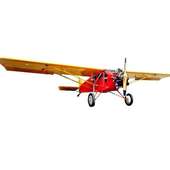- Opioid crisis shifts: declining deaths, emerging threats (3/14/25)
- Let’s hope this works (3/11/25)
- America at 250: A time to respect, remember and celebrate (3/7/25)
- From freedom fries to the Gulf of America (2/27/25)
- Fischer bill targets nursing home mandates (2/25/25)
- Federal job cuts and broken promises: A call for thoughtful action (2/20/25)
- Schools tackle absenteeism with new strategies (2/18/25)
Editorial
Bison designation as National Mammal becoming 'stampede'
Friday, August 17, 2012
It's easy to think of things more important for Congress to do than designate a U.S. National Mammal, but McCook residents should take more than a passing interest in a proposal that is gaining speed.
Make that, as proponents describe it, turning into a stampede.
U.S. Rep. Jeff Fortenberry and Sen. Mike Johanns of Nebraska, as well as 17 senators and four representatives from Wyoming, South Dakota, Colorado, the Dakotas, Missouri, New Mexico and even as far as New York, Ohio, Hawaii and Connecticut are sponsoring the National Bison Legacy Act, which would make the American bison that U.S. National Mammal.
Once numbering in the tens of millions, America's largest land mammal was slaughtered in large part to subdue the Native American population which depended on it.
By the early 1900s, the bison population was down to fewer than 1,100 animals.
McCook's own Buffalo Jones played an important part in saving the species. Repelled by the slaughter, he began capturing bison calves in the 1880s with an eye toward building a herd, which he kept at Garden City, Kans., then Culbertson and McCook, Nebraska.
President Theodore Roosevelt was of a similar mind, helping form the American Bison Society at the Bronx Zoo and sending 15 Bronx-born bison to the Wichita Reserve Bison Refuge in 1907.
Today, bison number in the hundreds of thousands in the United States, living in state and national parks, wildlife refuges, tribal and private lands.
On a lighter note, it's natural for McCook High School students, staff and alumni to support the effort that honors their school mascot, and which decorates the lawn in front of the High Plains Museum downtown in the form of a bronze statue, "The Prairie Bull" by Gary Ginther of Cambridge.
And, when some academics suggested that our region by converted back to a "Buffalo Commons," we turned the theme on its head, creating a storytelling festival to celebrate the culture of the Western Plains.
Proponents of the National Bison Legacy Act contend that bison are integrally linked to Native American culture, are a keystone species that benefit grassland ecosystems, hold significant value for private producers and rural communities, and are considered a symbol of the American West.
The measure seems to have a good chance of passing, thanks in part to more the support of more than 67,000 e-mails sent by the public to Congress.
For more information, visit www.votebison.org
In reference to Thursday's editorial, it should be noted that while the Red Willow County Sheriff's Office is investigating the idea of contracting dispatching services to Frontier County, the final decision on whether to do so will be left to the Red Willow County Commissioners.

